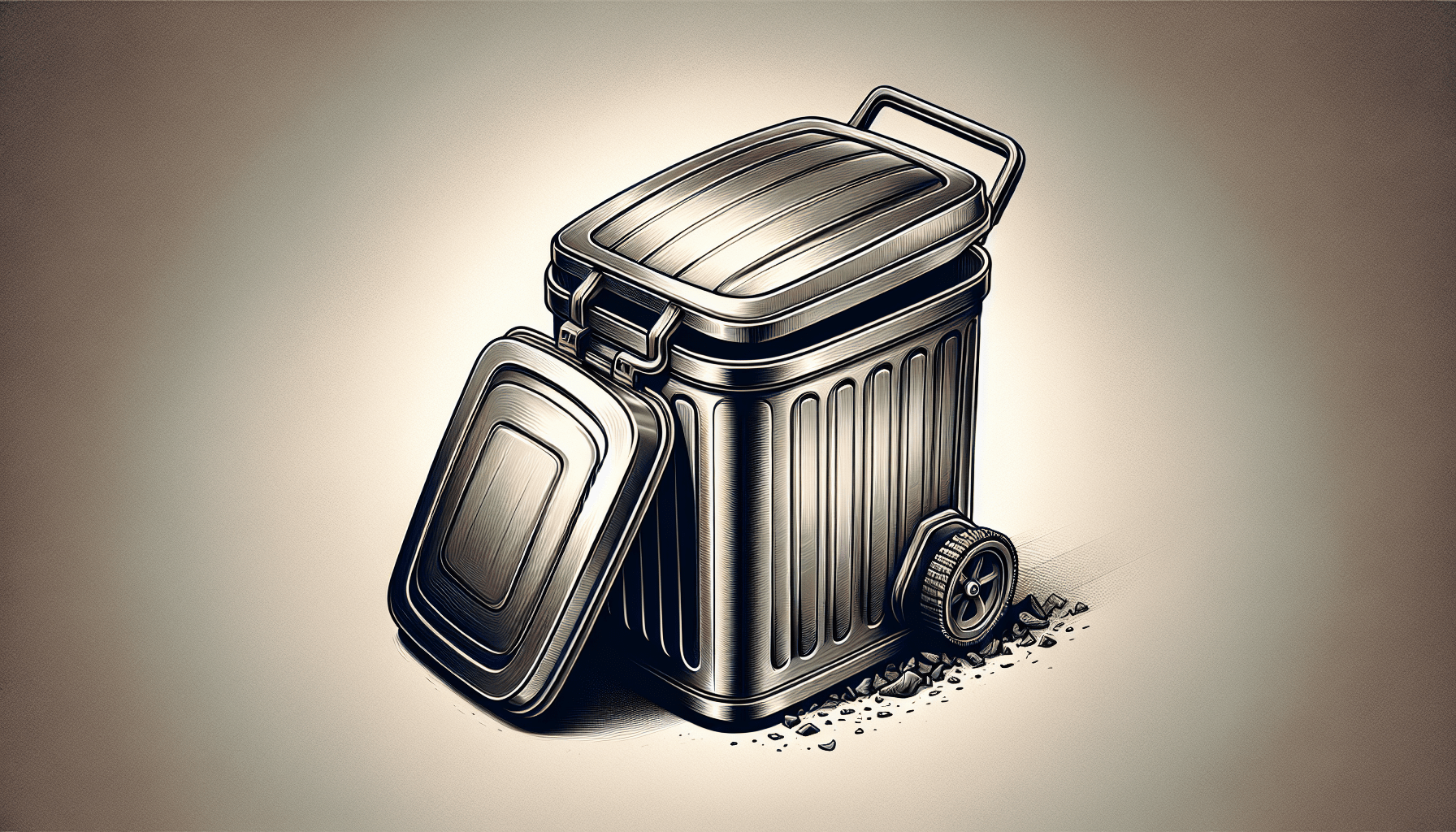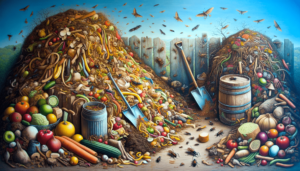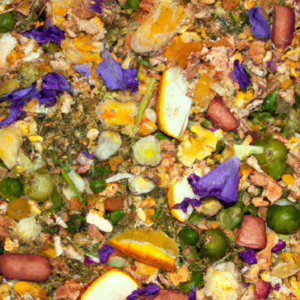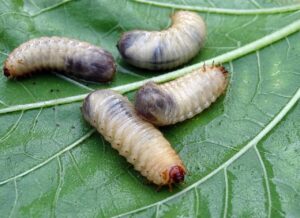Let’s talk about the secret to turning our kitchen scraps into nutrient-rich soil: indoor composting! If you’re like us and are passionate about sustainability, then finding the best containers for indoor composting is key. In this article, we’ll explore some of the top container options that will help you transform your food waste into a valuable resource for your plants. Get ready to discover the perfect containers that will make your indoor composting journey even more rewarding and convenient.
Plastic Containers
Plastic containers are a popular choice for indoor composting due to their many benefits. First and foremost, they are lightweight and easy to transport, making them convenient for those who may need to move their composting setup frequently. Additionally, plastic containers are durable and resistant to cracks, which means they can withstand the moisture and heat that can sometimes be present in composting environments.
When it comes to types of plastic containers, there are several options to choose from. One common choice is a lidded plastic bin, which helps to keep odors contained and prevent pests from accessing the compost. Another option is a stackable plastic container, which allows for easy expansion and increased capacity as your composting needs grow. Additionally, there are specialized plastic containers with built-in ventilation systems, which help to regulate airflow and prevent excessive moisture buildup.
Considerations for plastic containers include size, as you’ll want to choose one that is appropriate for your available space and composting needs. It’s also important to consider the quality of the plastic and ensure it is BPA-free, as this will help prevent any potential leaching of harmful chemicals into your compost. Lastly, consider the ease of cleaning and maintenance, as you’ll want a container that is easy to wash and keep hygienic.
Metal Containers
Metal containers offer their own set of advantages for indoor composting. One of the primary benefits is their durability. Metal containers are typically made from materials such as stainless steel or galvanized steel, which are resistant to corrosion and can withstand the elements of composting. This makes them a long-lasting option for those looking to invest in a container that will stand the test of time.
What Are The Best Containers For Indoor Composting?
Different types of metal containers are available to cater to different needs. One popular choice is a metal compost bin, which often comes with a tight-fitting lid to contain odors and keep pests out. These bins can be found in various sizes to accommodate different composting volumes. Another option is a metal tumbler, which allows for easy turning and aeration of the compost, promoting faster decomposition.
When considering metal containers, it’s important to think about their weight. Metal containers tend to be heavier than plastic or other materials, so ensure that the chosen size is manageable for your needs. Additionally, some metals may rust over time, so selecting a high-quality container made from corrosion-resistant materials is essential.
Ceramic Containers
Ceramic containers offer a unique aesthetic appeal and numerous advantages for indoor composting. One of the key benefits of ceramic containers is their ability to retain moisture. The porous nature of ceramic allows excess moisture to evaporate slowly, providing an ideal environment for the composting process. Furthermore, ceramic containers are excellent at insulating, which helps to regulate temperature and create optimal conditions for the microorganisms responsible for decomposition.
Various types of ceramic containers are available for indoor composting. Ceramic compost crocks, for example, are popular choices due to their attractive designs and convenient countertop storage. These crocks often feature charcoal filters in the lid, which effectively minimize odors. Another option is a ceramic compost bin, which is larger in size and suitable for those with greater composting needs.
When considering ceramic containers, it’s important to keep in mind that they can be fragile. Take care when handling ceramic containers to prevent any accidental breakages. Additionally, due to their weight and material composition, ceramic containers may not be as portable as some other options. Therefore, it’s important to choose a location where the container can remain undisturbed.
Wooden Containers
Wooden containers provide a natural and aesthetically pleasing option for indoor composting. One of the key benefits of wood is its excellent moisture retention properties. Wood absorbs excess moisture from the compost, helping to maintain the ideal moisture level for decomposition. Furthermore, wood is a natural insulator, which helps to regulate temperature and create a favorable environment for the microorganisms responsible for breaking down organic matter.
Different types of wooden containers are available to suit various preferences and needs. Wooden compost bins, for example, are a popular choice for those with larger composting volumes. These bins often feature a slatted design, which allows for airflow and efficient decomposition. Another option is a wooden compost caddy, which is smaller in size and ideal for countertop use.
When considering wooden containers, it’s important to choose a type of wood that is resistant to rot and decay. Cedar and redwood are commonly used for composting containers due to their natural rot-resistance. It’s also worth noting that wooden containers may require occasional maintenance, such as re-sealing or staining, to prolong their lifespan.
Fabric Containers
Fabric containers offer a lightweight and versatile option for indoor composting. One of the main advantages of fabric containers is their excellent airflow and drainage capabilities. The porous nature of fabric allows for proper oxygen circulation and water drainage, which are essential for the composting process. Additionally, fabric containers are collapsible and easy to store when not in use.
When it comes to types of fabric containers, there are several options to consider. Fabric compost bags are a popular choice due to their portability and ease of use. These bags often come with handles for convenient transportation and can be hung from hooks or racks. Fabric grow bags, which are commonly used for gardening, can also be repurposed for indoor composting. These bags are available in various sizes and shapes to accommodate different composting volumes.
Considerations for fabric containers include durability and longevity. While fabric containers are generally lightweight and easy to handle, they may not be as durable as some other materials. It’s important to choose high-quality fabric containers that can withstand the rigors of composting. Additionally, fabric containers may require occasional cleaning to prevent any buildup of unwanted organisms or pathogens.
Self-Watering Containers
Self-watering containers offer a convenient and efficient option for indoor composting. One of the key benefits of self-watering containers is their ability to provide consistent moisture to the compost. These containers feature a reservoir at the bottom, which allows the compost to draw moisture as needed, reducing the risk of over or under-watering. This self-regulating feature ensures optimal conditions for decomposition.
Different types of self-watering containers are available to cater to different needs. Self-watering planters with built-in composting compartments are a popular choice for those looking to combine composting with gardening. These planters often feature separate compartments for planting and composting, allowing for easy integration of the two processes. Another option is a self-watering compost bin, which is specifically designed for composting purposes.
When considering self-watering containers, it’s important to choose a size that is appropriate for your available space and composting needs. Additionally, ensure that the container has proper drainage capabilities to prevent any waterlogging issues. Some self-watering containers also come with additional features such as built-in ventilation, which further enhances the composting process.
Terracotta Containers
Terracotta containers are a popular choice for indoor composting due to their unique advantages. One of the main benefits of terracotta is its excellent breathability. The porous nature of terracotta allows for proper airflow, which is important for the composting process. Furthermore, terracotta containers naturally regulate moisture levels by absorbing excess water and releasing it slowly.
Various types of terracotta containers are available to suit different preferences and needs. Terracotta compost crocks, for example, are often used for countertop composting due to their compact size and attractive appearance. These crocks often come with removable lids and charcoal filters to minimize odors. Terracotta compost bins, on the other hand, are larger in size and suitable for those with greater composting volumes.
When considering terracotta containers, it’s important to note that they can be fragile. Take care when handling terracotta to avoid any accidental breakages. Additionally, terracotta containers may not be the best option for colder climates, as they can crack or break when exposed to freezing temperatures. It’s important to choose a suitable location for the container to ensure its longevity.
Glass Containers
Glass containers offer a transparent and visually appealing option for indoor composting. One of the main benefits of glass is its ability to provide a clear view of the composting process. This can be particularly useful for educational purposes or for those who simply enjoy observing the decomposition process. Glass containers are also non-porous, which means they won’t absorb moisture or odors.
Different types of glass containers are available to cater to different preferences and needs. Glass terrariums, for example, are a popular choice for those looking to create a mini ecosystem for composting. These terrariums often come with airtight lids and can be customized with various decorative elements. Glass jars or containers with lids are another option, especially for those with smaller composting volumes.
Considerations for glass containers include their weight and fragility. Glass containers tend to be heavier than some other options, so ensure that the chosen size is manageable for your needs. Additionally, glass containers can break if mishandled or dropped. Take care when handling and storing glass containers to prevent any accidents.
Recycled Containers
Using recycled containers for indoor composting offers numerous advantages, both for the environment and for your composting setup. One of the main benefits of recycled containers is their sustainability. By repurposing materials that would otherwise end up in landfills, you’re reducing waste and contributing to a more eco-friendly lifestyle. Additionally, recycled containers are often readily available and cost-effective.
Different types of recycled containers can be used for indoor composting. Plastic containers such as old food storage bins or buckets are a common choice due to their durability and versatility. Metal containers such as old coffee cans or tin cans can also be repurposed for composting purposes. Additionally, items such as wooden crates or pallets can be transformed into compost bins with a little creativity.
When using recycled containers, it’s important to ensure that they are thoroughly cleaned and free from any contaminants. Avoid using containers that previously held toxic chemicals or substances that may harm the composting process. Additionally, consider the size and design of the recycled container to ensure it is suitable for your composting needs.
Terrariums
Terrariums offer a unique and visually appealing way to incorporate indoor composting into your home. One of the main benefits of using terrariums for indoor composting is their ability to create a self-contained ecosystem. The closed environment of a terrarium allows for optimal moisture and temperature regulation, making it ideal for composting.
Different types of terrariums can be used for indoor composting. Closed terrariums, for example, create a humid and moisture-rich environment, which is beneficial for the composting process. These terrariums often feature airtight lids and can accommodate a variety of composting materials. Open terrariums, on the other hand, provide more airflow and are suitable for those who prefer a drier composting environment.
Considerations for terrariums include the size and accessibility. Ensure that the chosen terrarium is large enough to accommodate the composting materials and that you can easily access it for maintenance and monitoring. It’s also important to choose appropriate plants for your terrarium, as certain species may thrive better in a composting environment.
In conclusion, there are various containers available for indoor composting, each offering its own set of benefits and considerations. Whether you choose plastic, metal, ceramic, wooden, fabric, self-watering, terracotta, glass, recycled containers, or even terrariums, it’s important to consider your specific composting needs, available space, and personal preferences. By selecting the right container, you can create a successful and efficient indoor composting system that allows you to minimize waste and nurture your plants and gardens with nutrient-rich compost. Happy composting!




